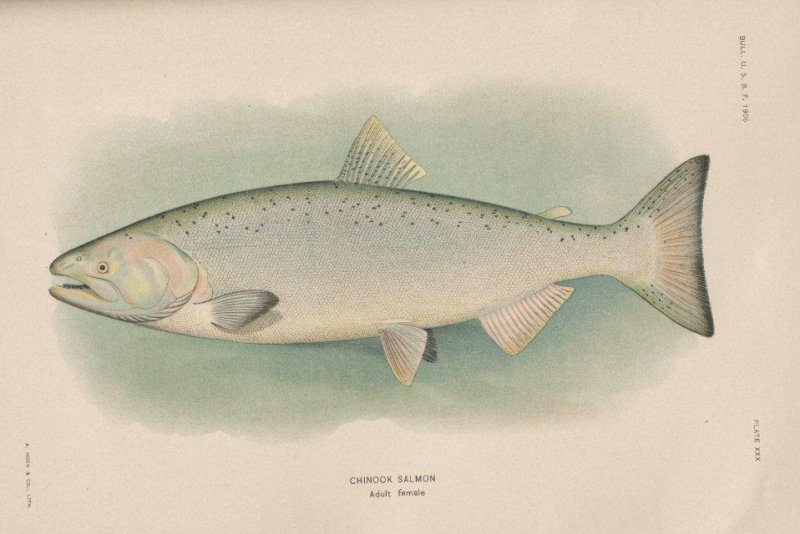The Chinook salmon has lost nearly two thirds of its genetic diversity. Photo by The Fishes of Alaska/Department of Commerce and Labor Bureau of Fisheries
Jan. 10 (UPI) -- Genetic diversity helps species survive and adapt to changing environmental conditions. Unfortunately for the Columbia River Chinook salmon, the species has lost nearly two-thirds of its genetic diversity.
Scientists at Washington State University collected and analyzed DNA samples from salmon found in the Snake and Columbia rivers. They compared their genome to DNA samples from salmon bones dating to 7,000 years ago.
The results -- published this week in the journal PLOS One -- show the salmon has experienced a dramatic decline in genetic diversity.
Researchers aren't sure what's driving the decline but believe the arrival of European settlers in the 1800s played a significant role.
"The big question is: Is it the dams or was it this huge fishing pressure when Europeans arrived?" Bobbi Johnson, who conducted the research while earning her doctorate in biological sciences, said in a news release. "That diversity could have been gone before they put the dams in."
Johnson and her colleagues were able to sequence the genome of early salmon populations by sequencing the mitochondrial DNA from 346 vertebrae. The scientists zeroed in on a region of the genome shared by 84 ancient fish.
"It's like a little snapshot that tells you who's who, who's in what family or what lineage," said Johnson.
Researchers then compared the genomic sequence to the same genetic region revealed by contemporary DNA samples.
"We found what was long suspected, that there was a lot of genetic diversity present, at least prior to when Europeans arrived," Johnson said.
Native Americans in the Pacific Northwest have caught salmon for at least 9,000 years. But scientists believe the arrival of Europeans in the 1860s precipitated the decline in the fish's genetic diversity.
Between 1889 and 1922, settlers harvested 25 million pounds of salmon per year. Today, 5 million pounds of Chinook salmon are harvested annually. The proliferation of dams during the 20th century also put pressure on Chinook salmon populations. Today, there are 400 dams throughout the Columbia River Basin. The dams severely reduce the amount of freshwater available for spawning.
To determine whether fishing pressure or dam construction caused the loss of genetic diversity, scientists need salmon samples from the 19th and 20th centuries. The earliest salmon evidence discovered by researchers dated to 150 years ago.
But scientists say their latest effort is just a jumping off point. Moving forward, they hope historical genetic analysis will inform efforts to restore salmon stocks in the region.















